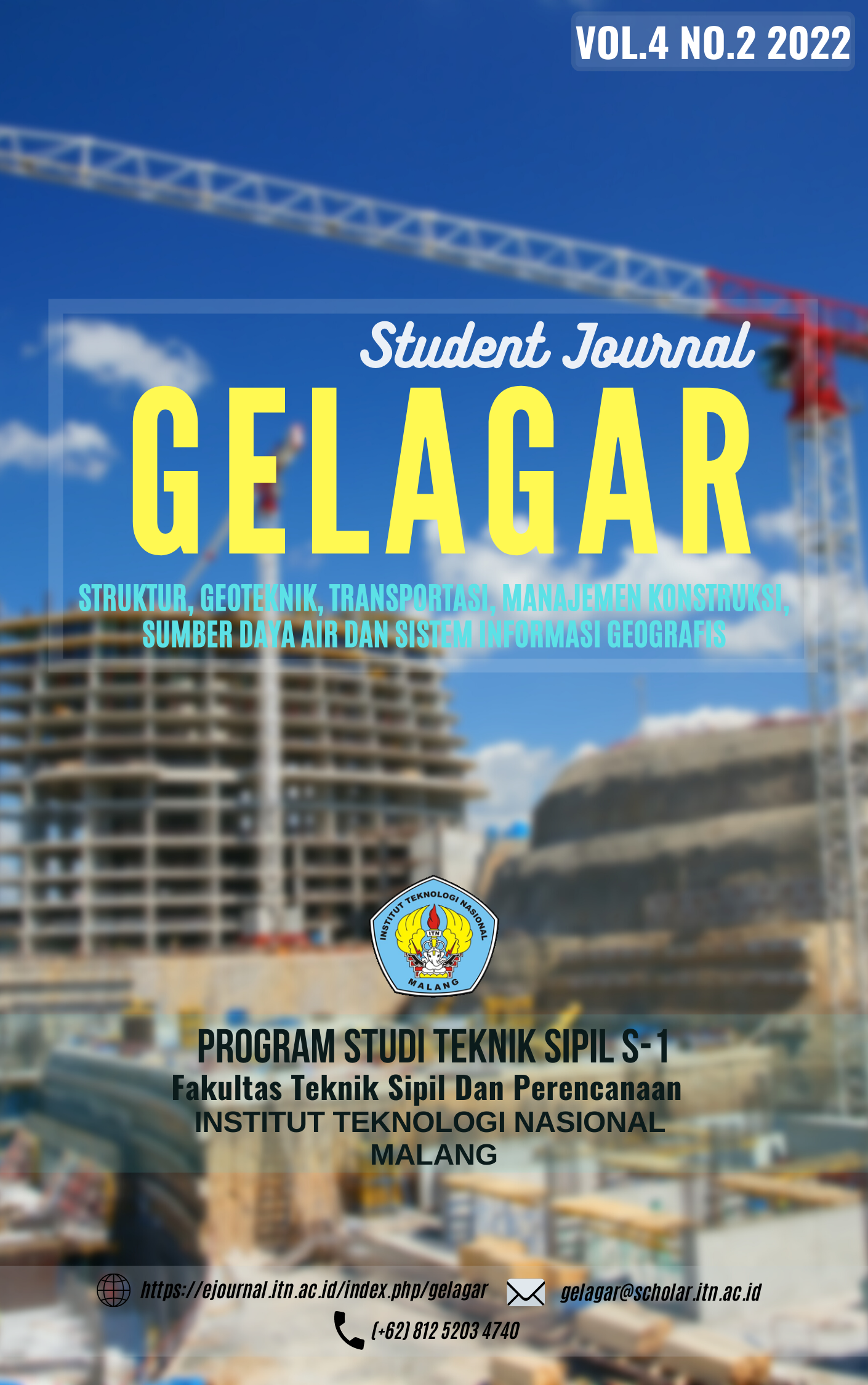ANALYSIS OF DRAINAGE CHANNELS AREA JL. KOLONEL SUGIONO, WARU DISTRICT, SIDOARJO REGENCY
Abstract
Drainage is the main means for flood control, especially in Waru District, Sidoarjo Regency, where based on information obtained from the news media on March 11, 2022 there has been flooding, especially in the area of Jalan Colonel Sugiono due to the condition of the drainage channel that has not been able to cope with the overflow of rainfall that occurred. . From the existing conditions, it is necessary to analyze rainfall data from the nearest rain gauge station in the last 10 years. To analyze the average rain area using the Algebraic average method, and from the results of the average rain area, it can be analyzed the planned flood discharge with the design rain through the EJ Gumbel distribution method. The results of the analysis of the capacity of the drainage channel obtained that the length of the existing drainage channel is 3794 meters with a maximum channel capacity discharge (Qeks) of 0.10467 m3/s and a minimum of 0.00849 m3/s. The maximum design flood discharge (Qren) is 0.0826 m3/s and the minimum is 0.0063 m3/s. So from the results of the analysis, it is still necessary to redesign for the overflow channel (Qren>Qeks) by changing the dimensions of the left segment 2 channel redesign, the width from 0.3 m to 0.4 m and height from 0.35 m to 0.4 m. . On the left and right segment 4 channels, the height of the channel is from 0.35 m and 0.4 m to 0.4 m and 0.5 m. While other channels are normalized. With the redesign of this drainage channel, it is hoped that it can seek to optimize drainage for flood control in the Colonel Sugiono road area, Waru District, Sidoarjo Regency.


